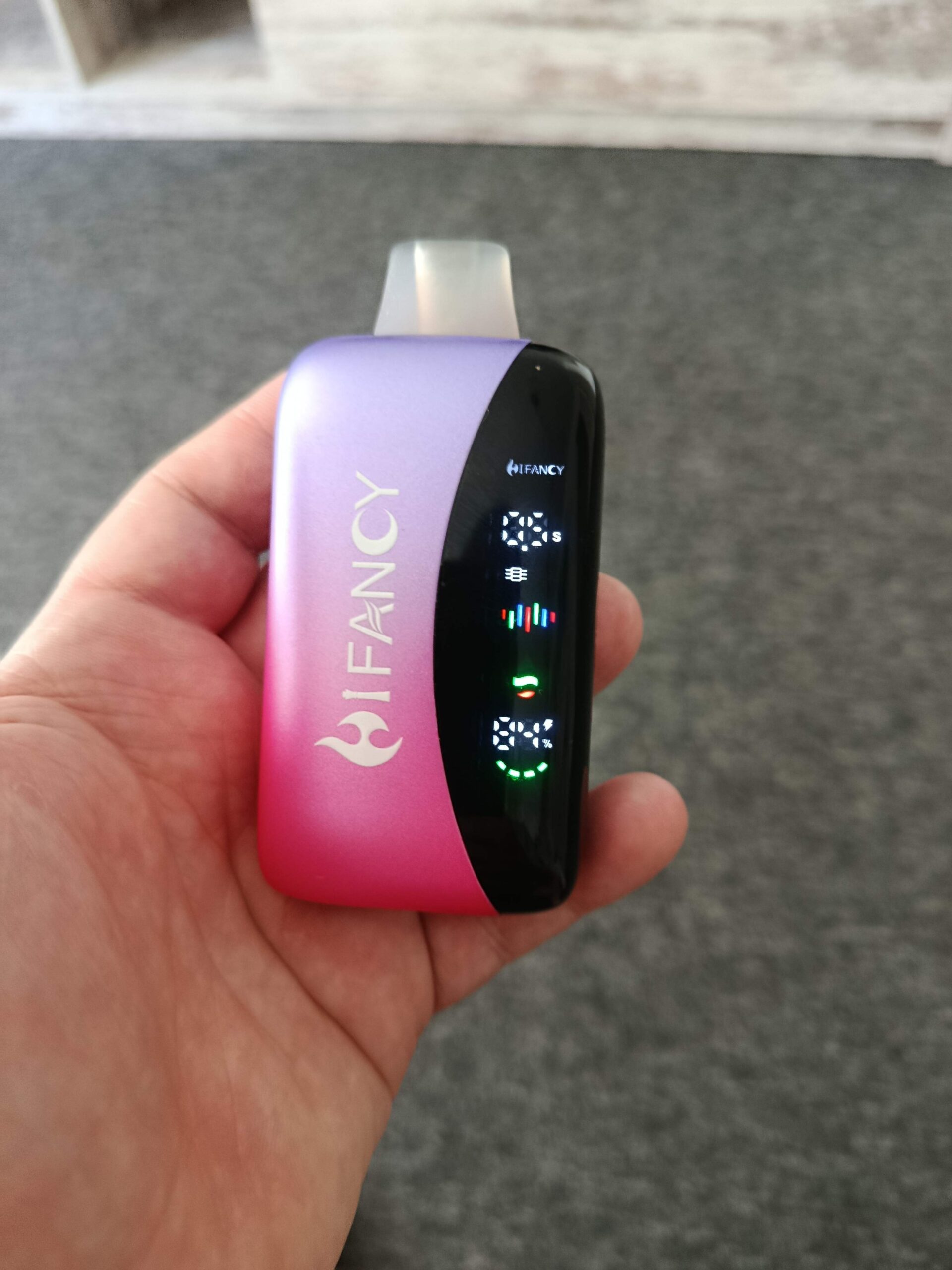Relația dintre țigările electronice și sănătatea cardiovasculară

The Complex Relationship Between E-Cigarettes and Cardiovascular Health: Unraveling the Science Behind the Risks
E-cigarettes, often marketed as a “safer alternative” to traditional tobacco, have sparked intense debate regarding their impact on cardiovascular health. While they eliminate combustion-related toxins like tar and carbon monoxide, emerging research reveals that e-cigarettes are not without risks, particularly concerning heart function, blood pressure regulation, and vascular integrity.
Immediate Cardiovascular Effects: From Heart Rate to Blood Flow
Acute Sympathetic Activation and Hemodynamic Changes
Nicotine, the primary addictive component in e-cigarettes, triggers rapid sympathetic nervous system activation upon inhalation. This leads to a surge in catecholamines, causing immediate increases in heart rate by 10–20 beats per minute and systolic blood pressure by 5–10 mmHg. Studies using myocardial contrast echocardiography demonstrate that even a single session of vaping reduces coronary blood flow by 15–20%, particularly during physical stress, due to nicotine-induced coronary vasoconstriction.
Endothelial Dysfunction and Atherosclerosis Risk
The aerosol generated by e-cigarettes contains propylene glycol, vegetable glycerin, and flavoring chemicals that, when heated, produce reactive oxygen species and aldehydes like acrolein. These compounds impair endothelial function by reducing nitric oxide bioavailability, a critical vasodilator. Animal models show that chronic exposure to e-cigarette vapor accelerates atherosclerotic plaque formation by 30% in apolipoprotein E-deficient mice, mirroring effects seen with traditional cigarettes. Human studies further confirm that vapers exhibit impaired flow-mediated dilation (FMD)—a marker of endothelial health—compared to non-smokers, with reductions correlating to vaping frequency.
Oxidative Stress and Inflammatory Pathways
E-cigarette aerosol induces systemic oxidative stress, elevating markers like malondialdehyde and 8-hydroxydeoxyguanosine in vapers’ urine. This oxidative burden activates NF-κB signaling, upregulating pro-inflammatory cytokines such as IL-6 and TNF-α. Chronic inflammation contributes to vascular remodeling, increasing carotid intima-media thickness (CIMT) by 0.05 mm over two years in longitudinal cohort studies—a change associated with a 20% higher risk of myocardial infarction.
Long-Term Cardiovascular Risks: From Hypertension to Heart Failure
Hypertension and Arterial Stiffness
While some studies suggest e-cigarettes may not elevate resting blood pressure as severely as traditional cigarettes, long-term use correlates with increased arterial stiffness. Pulse wave velocity (PWV), a measure of arterial elasticity, rises by 0.5 m/s in vapers after five years, equivalent to aging 10 years. This stiffness compromises diastolic function, raising the risk of isolated diastolic hypertension—a precursor to heart failure with preserved ejection fraction (HFpEF).
Lipid Dysregulation and Thrombosis
E-cigarette use alters lipid metabolism, reducing HDL cholesterol by 5–10% while increasing LDL oxidation. Oxidized LDL particles are more readily taken up by macrophages, accelerating foam cell formation and plaque instability. Additionally, vaping enhances platelet aggregation by 25%, as measured by platelet function analyzer (PFA-100) closure times. This hypercoagulable state doubles the risk of venous thromboembolism (VTE) in vapers under 40, according to a 2024 meta-analysis of 12 prospective cohorts.
Heart Failure and Structural Remodeling
Chronic nicotine exposure promotes cardiac hypertrophy by activating the renin-angiotensin-aldosterone system (RAAS). In rat models, six months of e-cigarette exposure increases left ventricular mass index (LVMI) by 15%, accompanied by fibrotic changes in the myocardium. Human studies echo these findings, with vapers showing a 19% higher prevalence of diastolic dysfunction on echocardiography compared to non-users—a key feature of HFpEF.
Comparative Risks: E-Cigarettes vs. Traditional Cigarettes
Reduced Harm in Dual Users?
Proponents argue that e-cigarettes offer harm reduction for smokers unable to quit. A 2023 Italian study found that hypertensive smokers who switched to e-cigarettes experienced a 10 mmHg drop in systolic blood pressure over one year, reducing their 10-year cardiovascular risk by 36%. However, dual users—those who vape and smoke—face compounded risks. Their carotid plaque burden is 40% higher than exclusive smokers, likely due to synergistic effects of combustion toxins and nicotine-induced vasoconstriction.
Methodological Discrepancies in Research
Controversy surrounds studies linking e-cigarettes to heart failure. A 2024 ACC study claiming a 19% increased risk of HF in vapers was criticized for conflating former smokers with never-smokers and failing to adjust for confounding variables like BMI and diabetes. Conversely, a 2025 Nature sub-journal analysis using juvenile and aged mouse models found no significant differences in cardiac function between e-cigarette users and non-users after 12 weeks, highlighting the need for standardized methodologies in vaping research.
Youth and Vulnerable Populations
Adolescents who vape face unique cardiovascular risks. Nicotine exposure during neurodevelopment disrupts autonomic regulation, leading to persistent tachycardia and arrhythmias. A 2024 survey of 12,000 U.S. teens revealed that dual users had a 30% higher prevalence of supraventricular tachycardia (SVT) compared to non-users, with symptoms worsening with increased vaping frequency. Pregnant women who vape also risk fetal programming of hypertension, as nicotine crosses the placental barrier and alters renal sodium handling in utero.
Regulatory Challenges and Public Health Implications
Gaps in Product Safety Standards
Unlike pharmaceutical nicotine replacement therapies, e-cigarettes lack mandatory quality control for nicotine content. A 2025 analysis of 544 e-liquid samples found that 16% contained no detectable nicotine despite labeling claims, while 22% exceeded stated concentrations by over 100%. Such inconsistencies undermine informed decision-making and exacerbate addiction cycles.
Misinformation and Marketing Tactics
The e-cigarette industry often downplays risks, framing products as “water vapor” or “harmless.” However, secondhand aerosol contains nicotine, heavy metals, and volatile organic compounds (VOCs) at levels comparable to traditional cigarette smoke. A 2024 study detected formaldehyde concentrations of 12 μg/m³ in vape shops—exceeding WHO safety limits by 300%.
Evidence-Based Policy Recommendations
To mitigate cardiovascular harm, public health agencies must prioritize:
- Strict Nicotine Labeling: Mandate third-party verification of e-liquid nicotine content.
- Flavor Restrictions: Ban candy-like flavors that appeal to youth, reducing initiation rates.
- Vaping Cessation Programs: Integrate behavioral counseling with FDA-approved medications like varenicline.
- Surveillance Systems: Track cardiovascular outcomes in vapers through national registries.
Concluzie
The relationship between e-cigarettes and cardiovascular health is far from straightforward. While they may offer harm reduction for some smokers, e-cigarettes pose significant risks—particularly for youth, dual users, and those with preexisting conditions. Emerging evidence underscores the need for rigorous regulation, transparent research, and public awareness campaigns to counter misinformation. Until long-term safety data is available, the precautionary principle should guide policy: e-cigarettes are not a risk-free alternative to smoking, and their cardiovascular impacts warrant serious concern.









